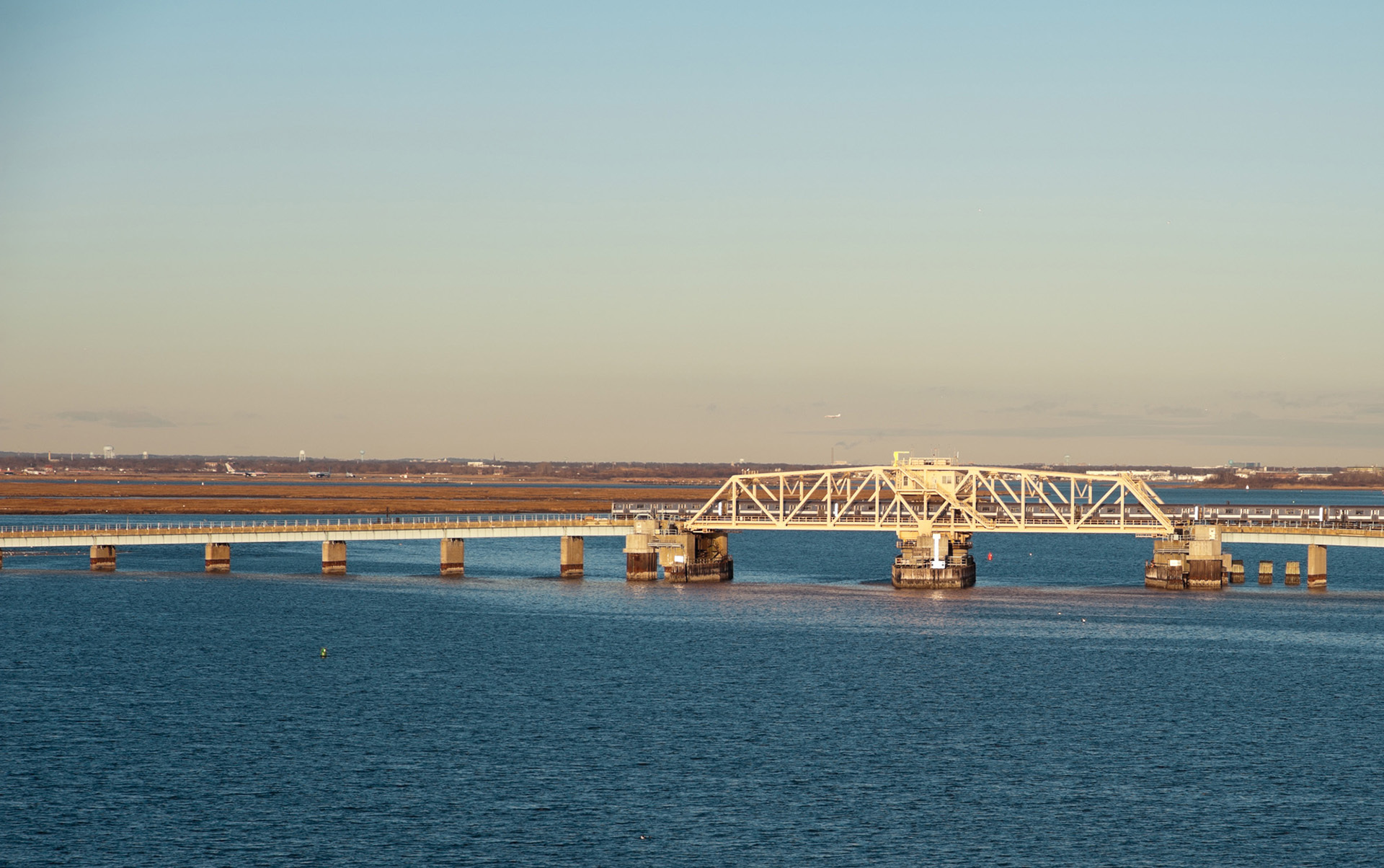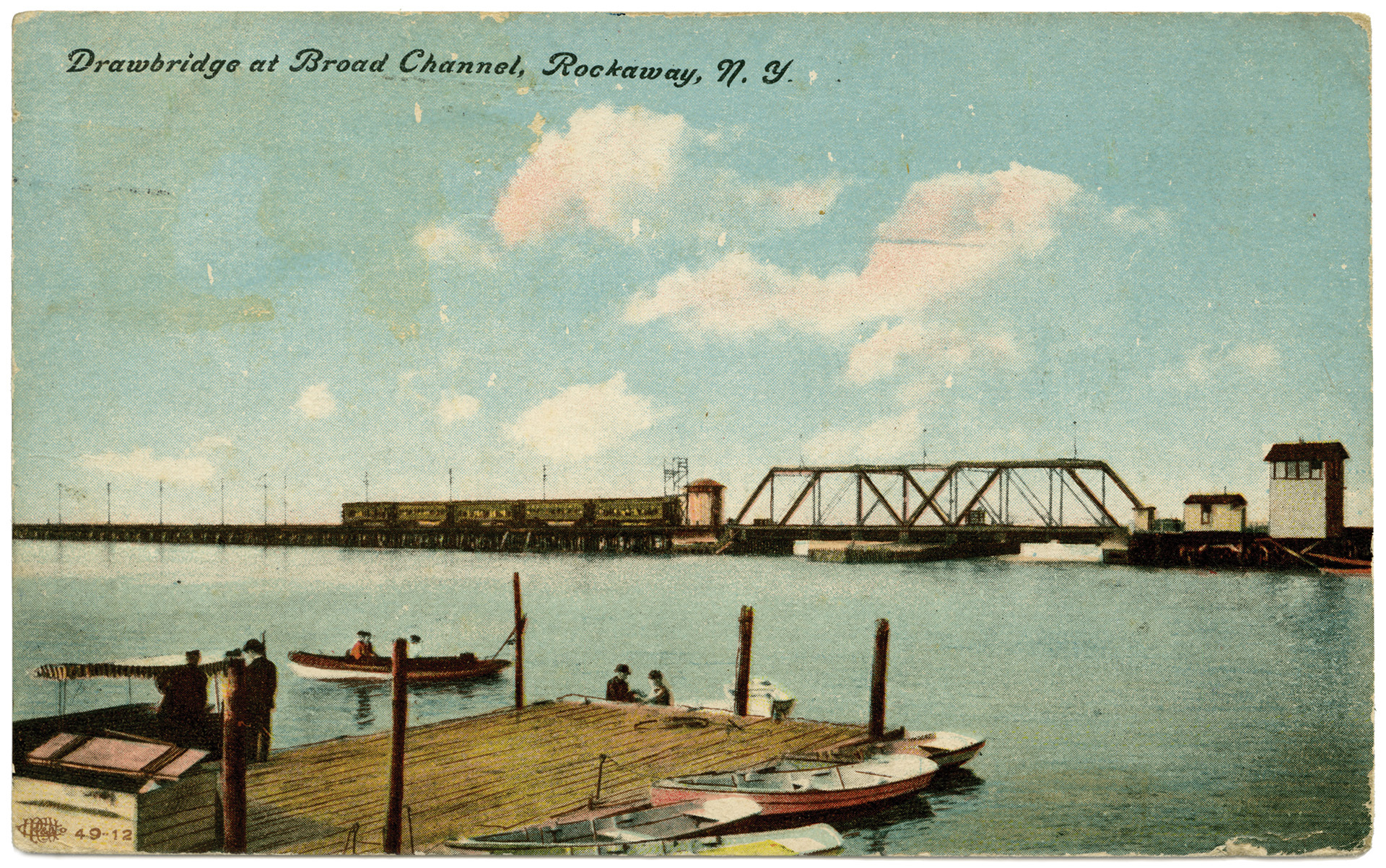Broad Channel Bridge
Then
Starting in the 1830s, seaside hotels began to spring up on the Rockaway Peninsula in Queens (before that it was largely undeveloped). The Rockaway Beach Railroad began operating between East New York and Canarsie Landing in 1865; at this time ferry service also began. In April, 1877, the town of Jamaica gave James M. Oakley a 99-year lease for constructing a railroad across Jamaica Bay. The New York, Woodhaven, and Rockaway Railroad opened its five-mile track on August 26th, 1880. It was an instant success—on the first day, it carried 65,000 passengers.
After Oakley sold his interest in the railroad, the Long Island Railroad began running trains on the line in 1887. The trestle rested on over 1,700 piles placed 12-17 feet apart in the water, sat an average of only nine feet above high tide, and originally featured three iron swing bridges.

Broad Channel Bridge, 2009
Now
Maintaining the line was troublesome; both winter (ice causing the piles to shift) and summer (shipworms attacking the wood) brought conditions that weakened it. In 1948, a boat hit the bridge supports and the tower pictured on the postcard image was damaged.
In 1950, there was a fire between two stations on the line (The Raunt and Broad Channel) that destroyed much of the trestle, which was the death knell for the LIRR’s service in the area. New York City bought the line for $8.5 million began a project to retrofit it for subway use (at a cost of $47.5 million).
The line became part of the Independent Subway System (IND) and connected to the IND Fulton Street Line. Service began in 1956. The three iron bridges were replaced by two steel swing bridges. The project created two islands in Jamaica Bay, which the line passes over, one of which is called, appropriately, Subway Island. Initially, a double subway fare was charged; this was discontinued in 1975.
